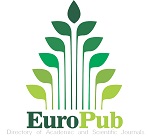Women on the Big Screen: A Multimodal Dive into Pakistani Drama ‘Tere Bin’
Abstract
The study aims to explore the representation of women empowerment in the Pakistani drama "Tere Bin." The objectives are to analyze the visual and textual elements used in portraying women empowerment, examine the signs and symbols employed for narration, and understand how these portrayals challenge traditional gender roles and power dynamics. The researcher has employed a theoretical framework called multimodality, developed by Kress and Leeuwen, to analyze the visual and textual elements used in the drama. This framework helps us understand how different modes of communication, such as images, language, and gestures, work together to convey meaning and shape the representation of women empowerment in the drama. The researchers carefully selected specific scenes from the drama using a purposive sampling technique and employed a qualitative research method along with an interpretive approach to delve into the findings. The study revealed a complex and nuanced depiction of women empowerment in "Tere Bin." It showcased women as both selfless champions, challenging societal norms and fighting for change, as well as selfish and dominant, defying traditional gender roles. It's truly fascinating to see the multifaceted nature of women empowerment explored in this drama.
Keywords: Women Empowerment, Pakistani Drama, Multimodal by Kress and Leeuwen









